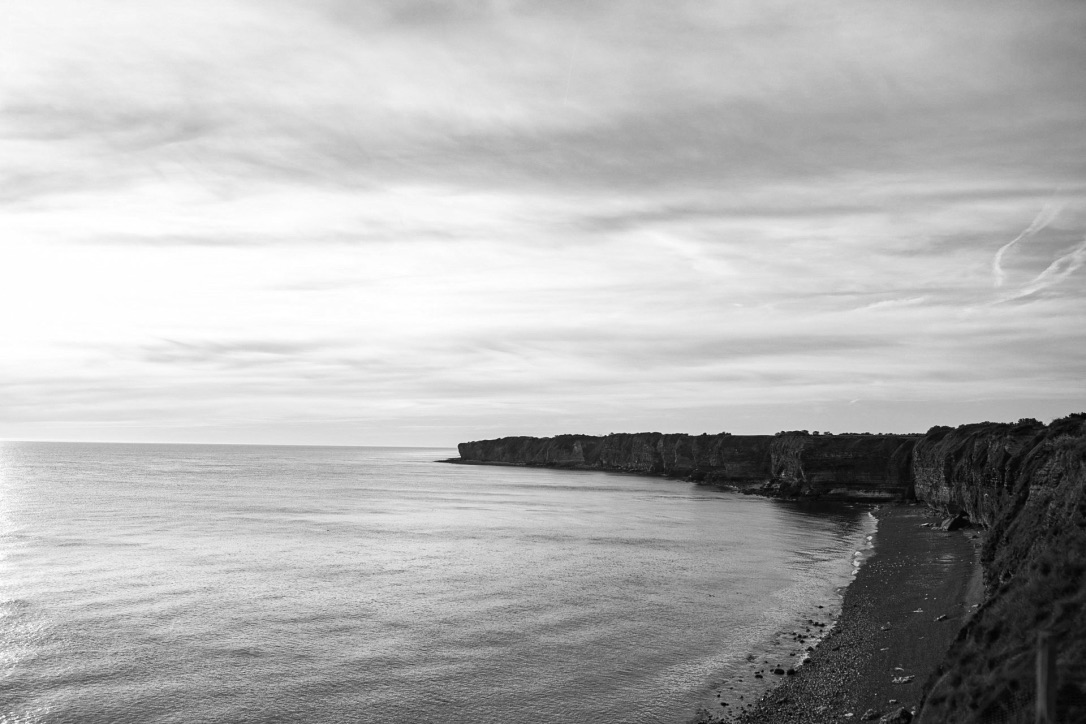
“We’re here to mark that day in history when the Allied peoples joined in battle to reclaim this continent to liberty. For four long years, much of Europe had been under a terrible shadow. Free nations had fallen, Jews cried out in the camps, millions cried out for liberation. Europe was enslaved, and the world prayed for its rescue. Here in Normandy the rescue began. Here the Allies stood and fought against tyranny in a giant undertaking unparalleled in human history.” – Ronald Reagan, Pointe de Hoc, June 6th, 1984
On June 5th, on a hot, clear night in a Nashville suburb, twenty-eight stood in formation to begin one of the first GORUCK events held in three months. With much of normal life having been shut down for so long, returning to our ranks with both GRTs we knew and ones we didn’t felt exciting, heady and not insignificantly, like the first deep inhale after a period of labored or restricted breathing. A worldwide pandemic which took the ease of breathing from so many, both temporarily and permanently, had changed us and this return to a favored pastime was not left untouched. Yet in recent days the effects of COVID-19 seemed to fade to background as our nation grappled with grief and newfound awareness of the many issues that led to the death of a man who begged for breath as life was unjustly denied him.
In short, the night was charged with expectation in a way I felt I’d never experienced before. Then it hit me that this felt all too familiar. This felt much like the night I trepidatiously returned to Ft. Bragg the year after we lost Jerome Gonzales. I’ll never forget the feeling in the air that night as we stood together, unsure of so much but unshakeable in our determination to stand as a community and as individuals. Last Friday, we stood to persevere through what’s happening in the world today by honoring the actions of 225 Rangers in their invasion on Pointe de Hoc on June 6th, 1944.
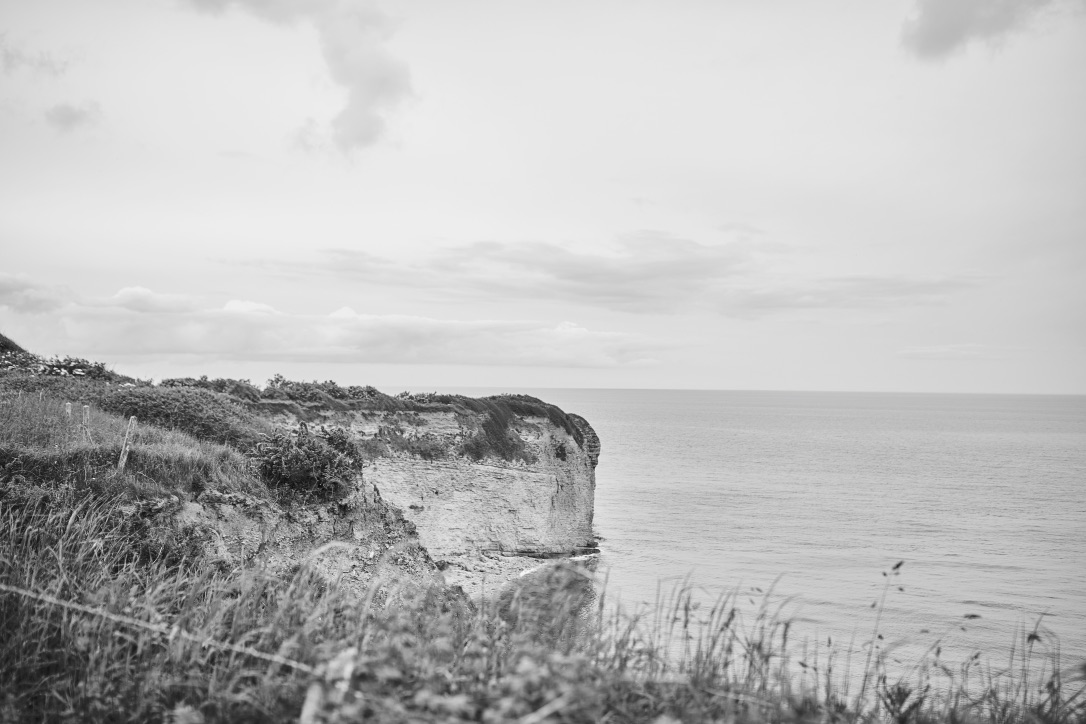
“At dawn, on the morning of the 6th of June 1944, 225 Rangers jumped off the British landing craft and ran to the bottom of these cliffs. Their mission was one of the most difficult and daring of the invasion: to climb these sheer and desolate cliffs and take out the enemy guns. The Rangers looked up and saw the enemy soldiers — at the edge of the cliffs shooting down at them with machine-guns and throwing grenades. And the American Rangers began to climb.”
Two of today’s American Rangers began to lead us. As the admin session began and the Cadre introduced themselves, it was evident to anyone who hadn’t previously known that our events were to be led by two Army Rangers, Cadre John Belman and Aaron Hand. More importantly, two Rangers who had participated in another well-known mission, the Battle of Mogadishu in 1993. The stage was set to see the history and role of Rangers from both distant and not-so-distant points in history.
In the weeks preceding the events, HQ and the Cadre kept us well-informed of the process of making decisions on whether or not they would take place. The Nashville events were allowed to continue primarily because the Start Point was already set in a suburb well outside the city. In the days prior, Cadre communicated frequently with local police and park staff to minimize the risk of us being mistaken as a threat. Numerous precautions were also taken to allay fears over possible transmission of COVID-19, including instructions for participants leading up to the events.
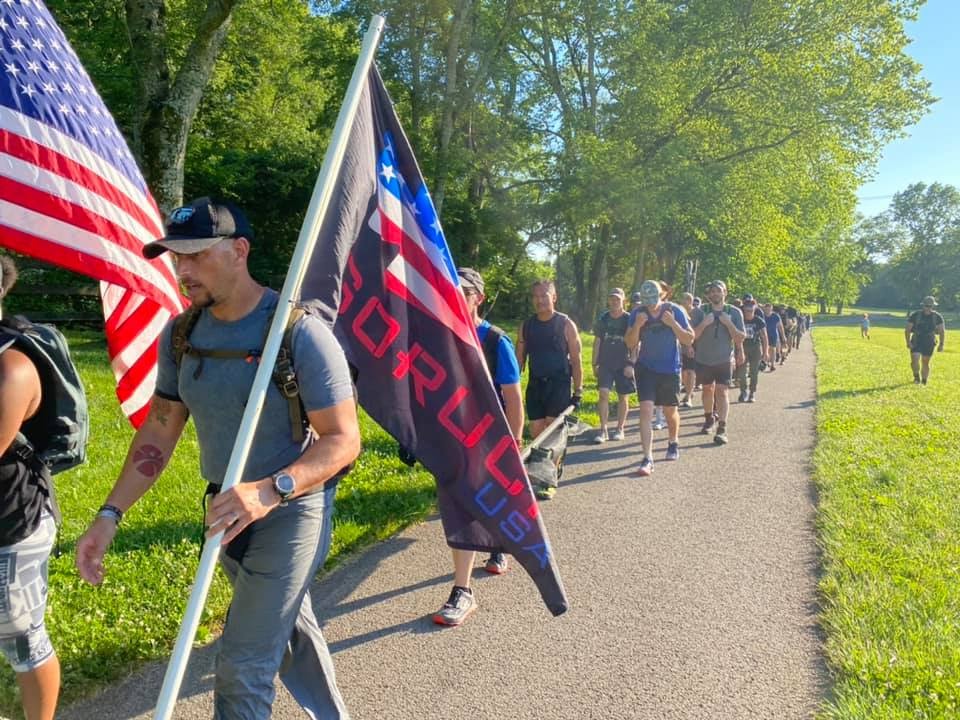
During the admin phase of each event, we were told that disinfecting wipes and disinfecting spray designed specifically for fabric were available and we were encouraged to use them at any point we wished to. As previously noted in social media posts, there were none of the typical event elements that would have had us in close proximity to each other, e.g. buddy carries, tunnel of love. While I don’t know that anyone utilized the wipes or spray, eliminating those PT elements made a lot more of a difference at keeping us apart than I thought.
Like most any GRT, I wondered how not being able to carry sandbags would affect the event. Would it even feel like an event without the grind of hundreds of pounds of weight to carry and swap among us? The answer is, of course, yes. Cadre are not one-trick ponies and sandbag carries are a common but not the ultimate in team drudgery.
In short, we did have weight to carry and we did carry it together. We had four litters that each held at least 120# of weight. We also had two water jugs which were swapped around between the litters. The litters’ width did not allow for a two-person shoulder carry and a four-person carry would have had us too close to each other. I cringed when the cadre announced at the beginning of the Heavy that our only allowable carry was a low one. I thought my grip strength couldn’t hold up to a weekend of that but we worked out a system of switches and it never became an issue.
Another significant factor in this HTL was that the cadre had limited our AO to specific greenways and a park that would keep us largely out of sight. They were upfront in saying that this would limit our mileage and have us covering the same ground over and over. I can’t speak for everyone but I know at least some of us were happy to accept that limitation in order to just be out there again. Again, the Cadre clearly setting expectation and explaining certain decisions went a long way toward accepting changes we didn’t necessarily love.
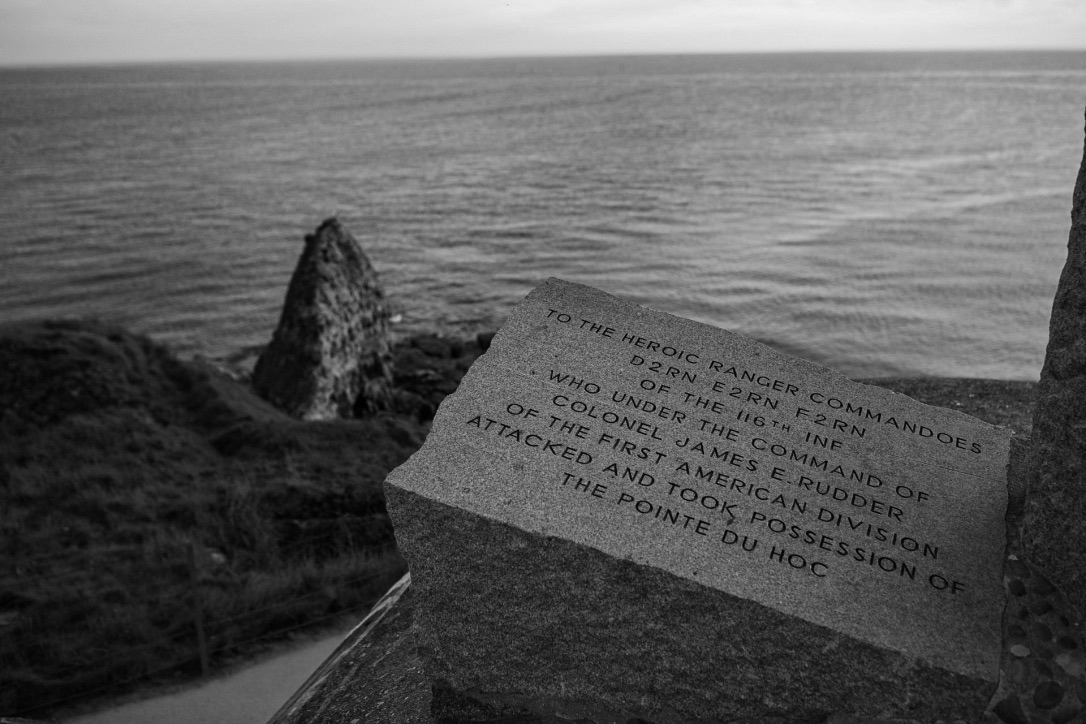
“They shot rope ladders over the face of these cliffs and began to pull themselves up. When one Ranger fell, another would take his place. When one rope was cut, a Ranger would grab another and begin his climb again. They climbed, shot back, and held their footing. Soon, one by one, the Rangers pulled themselves over the top, and in seizing the firm land at the top of these cliffs, they began to seize back the continent of Europe. “
This weekend could have been a long one full of discontent and discord over the state of the world today and the aforementioned changes to the event. But it wasn’t. It was litter carries and litter carries only and that’s what we did. We partnered up and divided ourselves into equal ranks. Either the TL or ATL kept interval time and the entire team would set down and pick up together. As one team or another would fall behind, that team would be instructed to move to the front. These strategies were consistent throughout the events. Further, the litter were used in PT sessions to great effect. Racing the length of soccer fields in two-person carry teams was no joke.
In my personal experience, the events of this weekend represented the most equitable workload of any I’ve done. By that I mean that I felt that I more equally contributed to the work needed. At 5’2” and 125#, I’m a desirable option as a casualty carry. I (and other women I know who are my size) often wonder if the guys realize how much we don’t want to be carried. We have to work harder and carry a higher percentage of our bodyweight to fully participate these events. (Frankly, the smaller of us carry a higher percentage of our BW in rucks alone.) We train very hard to be ready for that. The moment in most events where a guy turns around and points, “YOU’RE our casualty” is reliably deflating. Most often, they’re smiling like they’re offering us a welcome reprieve. I haven’t yet had the heart to burst that bubble and inform them that being carried will challenge your capacity to be comfortable with the uncomfortable like few other things.
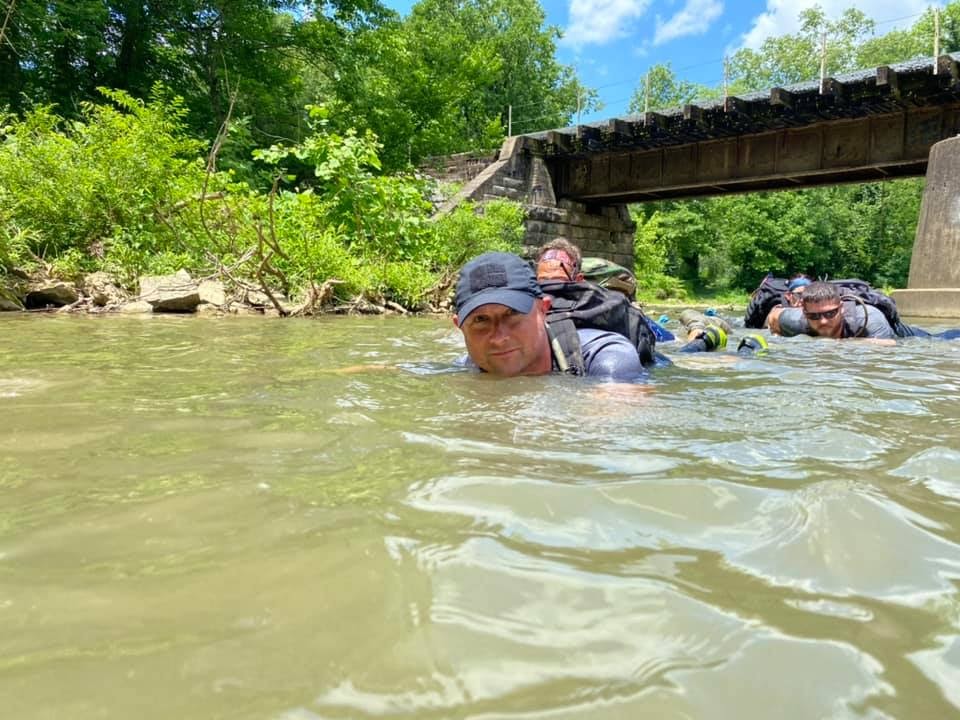
Similarly, these events brought to the forefront a common but infrequently discussed topic – stride length. I mean, maybe a short girl shouldn’t be writing this because I can’t help but sharing perspective from my vertically-challenged existence but I can only call the shots like I see them, right? While I was delighted that my grip stood to the test, I was continually dismayed at not being able to keep up with most of the team. It seemed more evident in this type of carry situation. My frequent partner, Teresa, who is even shorter than I, and I would try shuffling as we carried the litter but doing so meant recovering enough before our next turn was difficult. We were often deciding between walking at a pace that felt too fast for walking and too slow for shuffling. There really wasn’t a solution that allowed us to keep up in the way we wanted. Enter humility and dogged determination and we continued on.
The theme of this HTL was seamlessly woven into our tasks and efforts. Excerpts of Reagan’s D- Day speech at Pointe de Hoc on the 40th anniversary were read throughout each event. PT was designed to honor those killed and wounded (sets of 135 reps of various exercises, including ruck burpees) and to simulate what those two hundred and twenty-five men felt as they made landfall (log rolls the length of a soccer field to induce nausea and disorientation).
During each event, we spent time in a creek. We completed a half-mile-plus of litter carries through a slippery creek bed in both the Heavy and Tough. In each event, we low crawled through the water, providing both relief from the heat and humidity as well as ensuring that our feet were never, ever dry.
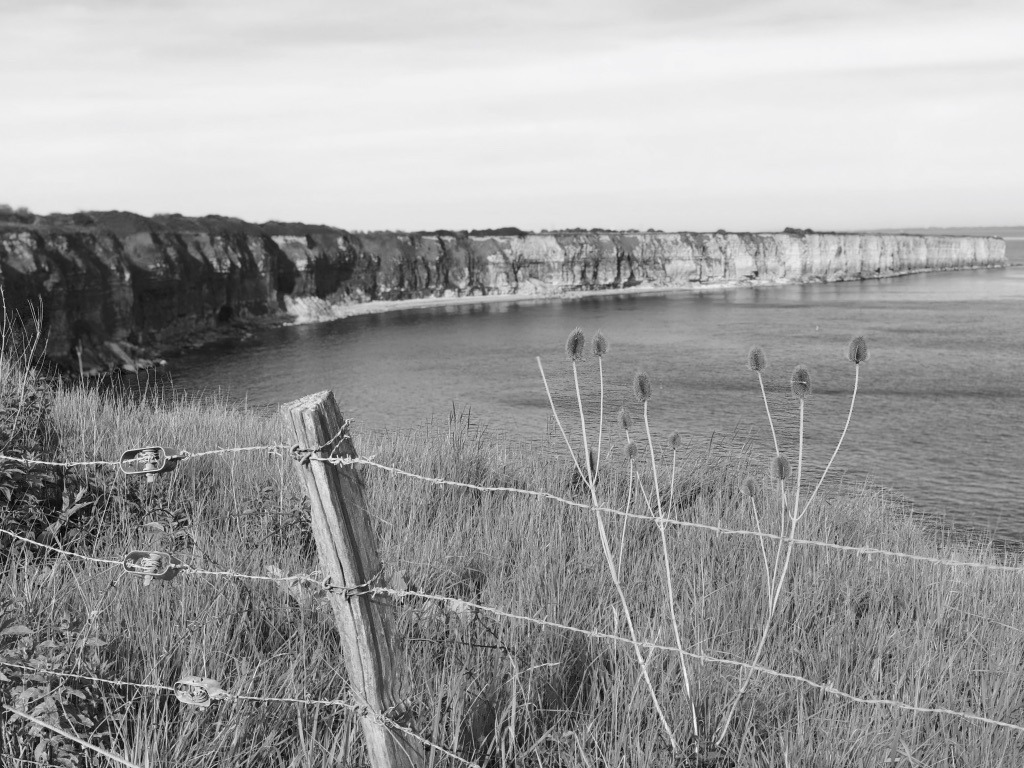
“Behind me is a memorial that symbolizes the Ranger daggers that were thrust into the top of these cliffs. And before me are the men who put them there. These are the boys of Pointe du Hoc. These are the men who took the cliffs. These are the champions who helped free a continent. These are the heroes who helped end a war.”
My exhaustion in the wee hours of Saturday morning could not steal from me the opportunity to be humbled as I heard a break of emotion in the voice of a Ranger as he read those words. As is the case in many institutions, the Rangers of today follow in the path of those of yesterday. To fight the same battles in the same wars is not required for unity for the same blood and the same belief flows within those who choose this manner of service.
Sure, I left this weekend with the HTL patch I hadn’t made time to earn before. But as with any GORUCK event, I left with so much more. In once again joining an unknown team to endure unknown challenges and to look back at a particular time in our nation’s history, I gained new strength and perspective on how I can face the challenges our nation is grappling with right now. Those challenges include growth in understanding, listening and compassion for those of different experience and perspective. Looking back is an excellent way to wisely move forward.
It was indeed a weekend of ‘building better Americans’ and Rangers led the way.
NASHVILLE HTL BY THE NUMBERS
HTL FINISHERS (completed consecutive Heavy, Tough, and Light events): 19
HEAVY – 28 Participants finished – 26 Mileage – 29 PT Highlights – PT test: 2 minute max effort – pushups, flutterkicks and air squats, max effort pull-ups or chin-ups, 12 mile ruck; front-back-go, .65-mile creek litter carry and creek low crawl
TOUGH – 40 Participants finished – 40 Mileage – 12 PT Highlights – 135 ruck burpees, 135 Iron Elvis, 135 4 count mountain climbers, 1.88m timed ruck, 240-yard litter carry relay, 120-yard log roll, .65-mile creek litter carry and creek low crawl
LIGHT – 48 Participants finished – 46 Mileage – 5 PT Highlights – 240-yard litter carry relay, low crawl in creek, 135 total count of Iron Elvis, 4 count mountain climbers and ruck burpees
HTL finisher Renée Aly authored this blog. She obtained photos from several contributors including Aubrey Privette, Chris DuBois, Aaron Hand, Eugenio del Rio, Gregory Koerner, and Travis Schoenheit.
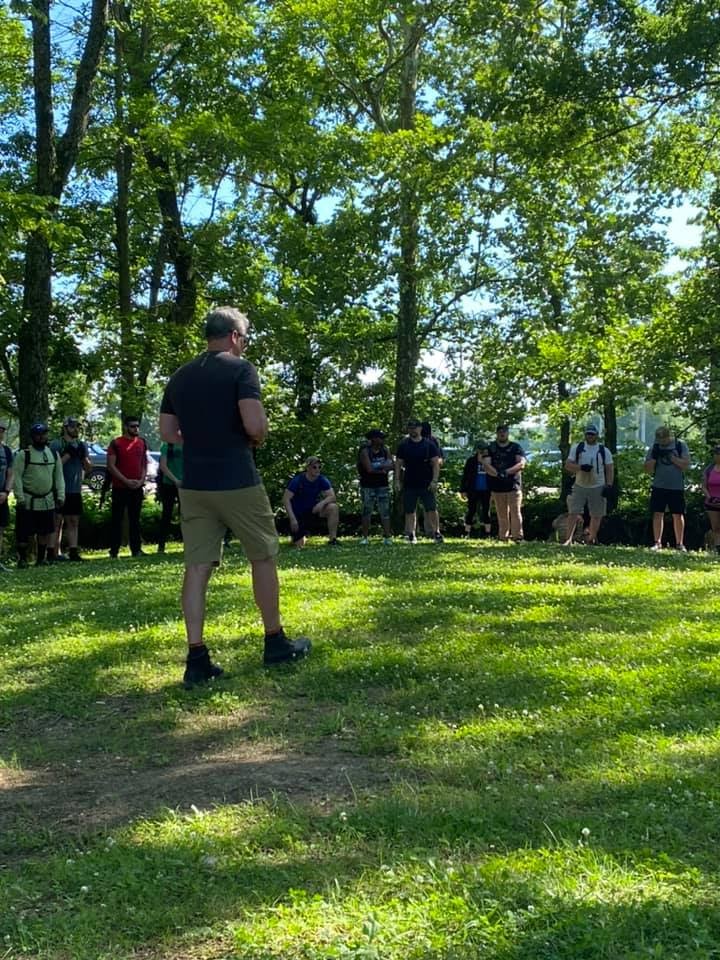
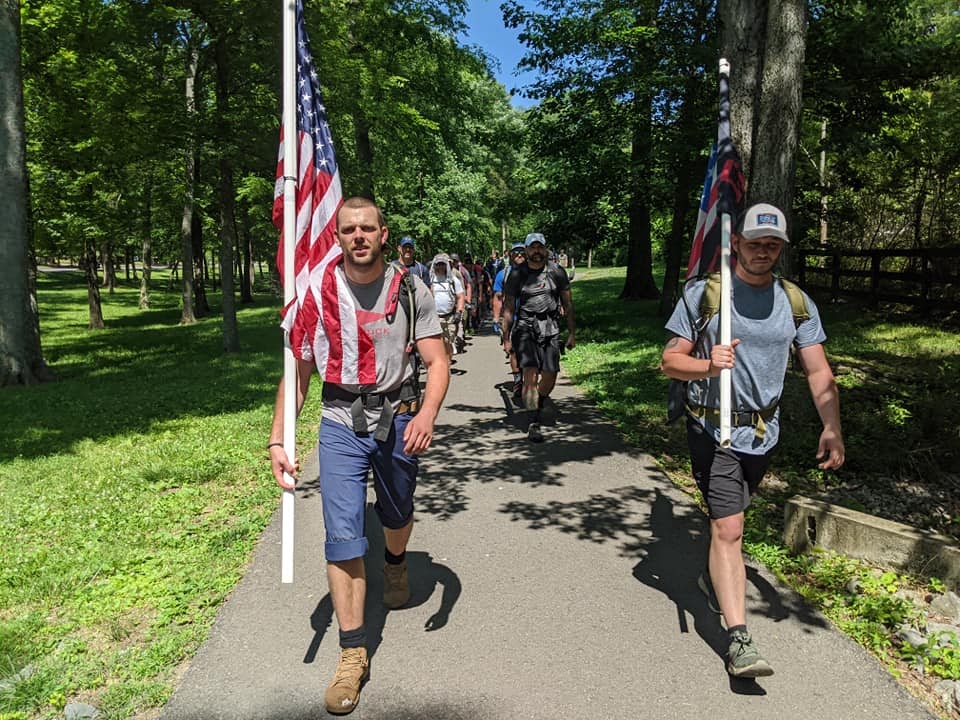
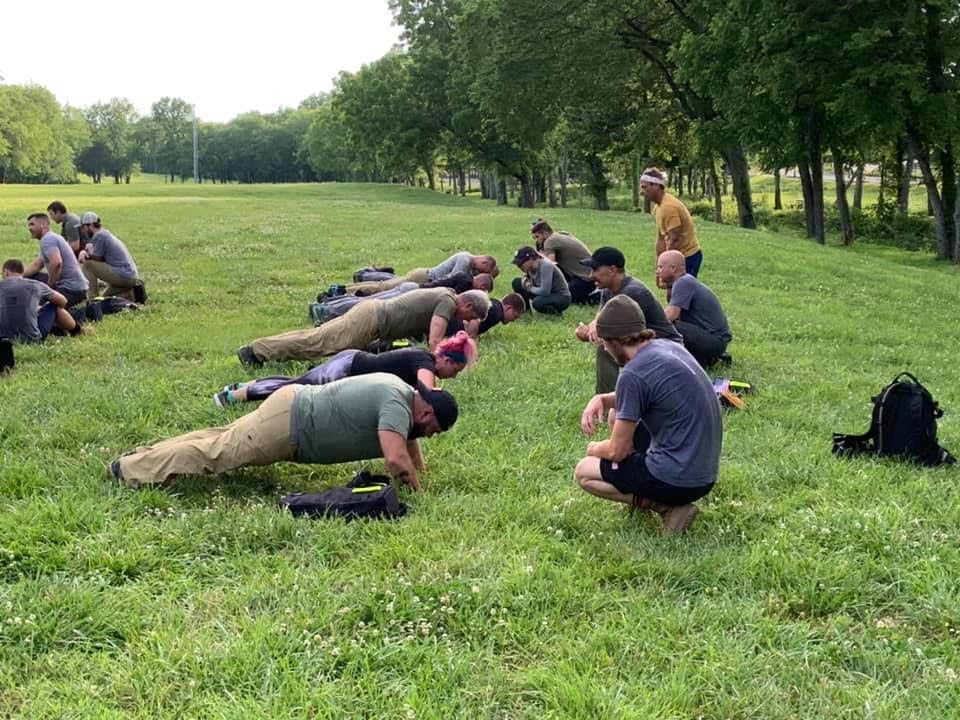
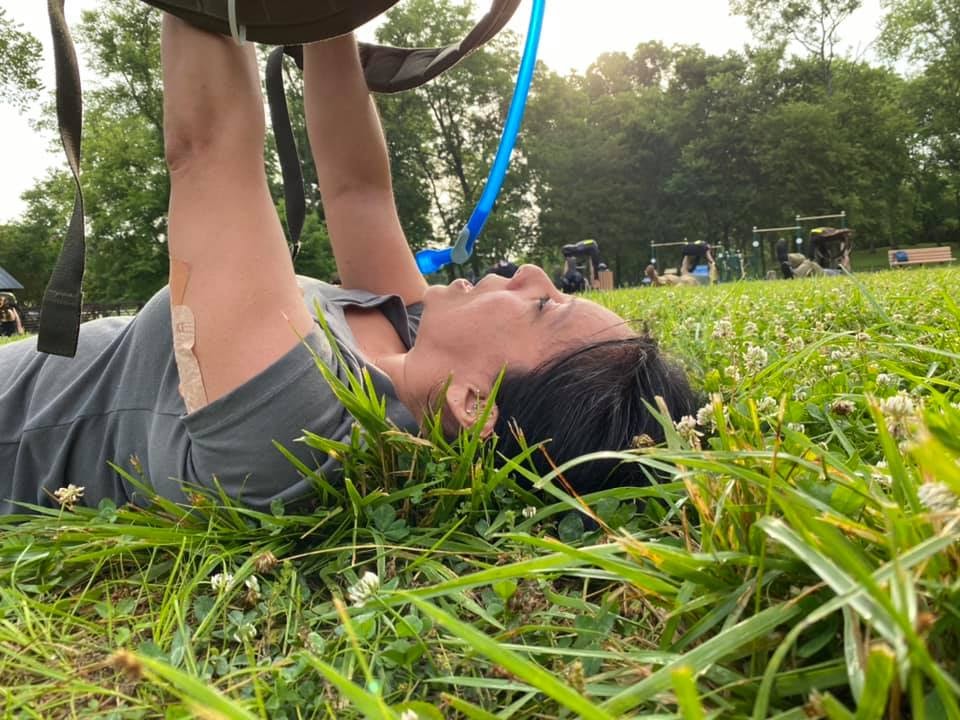
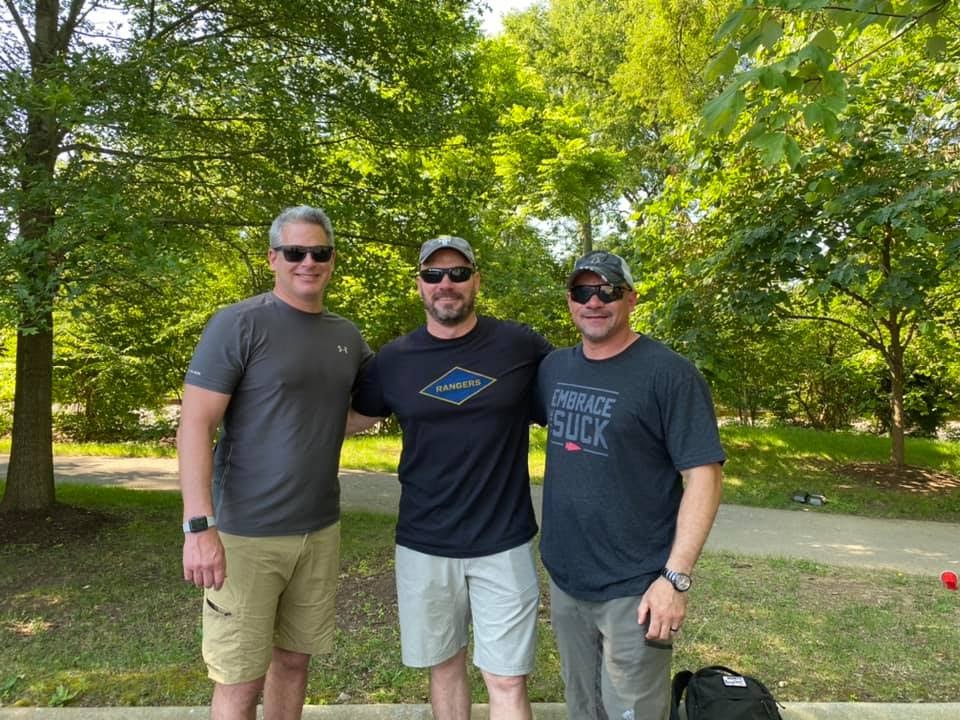
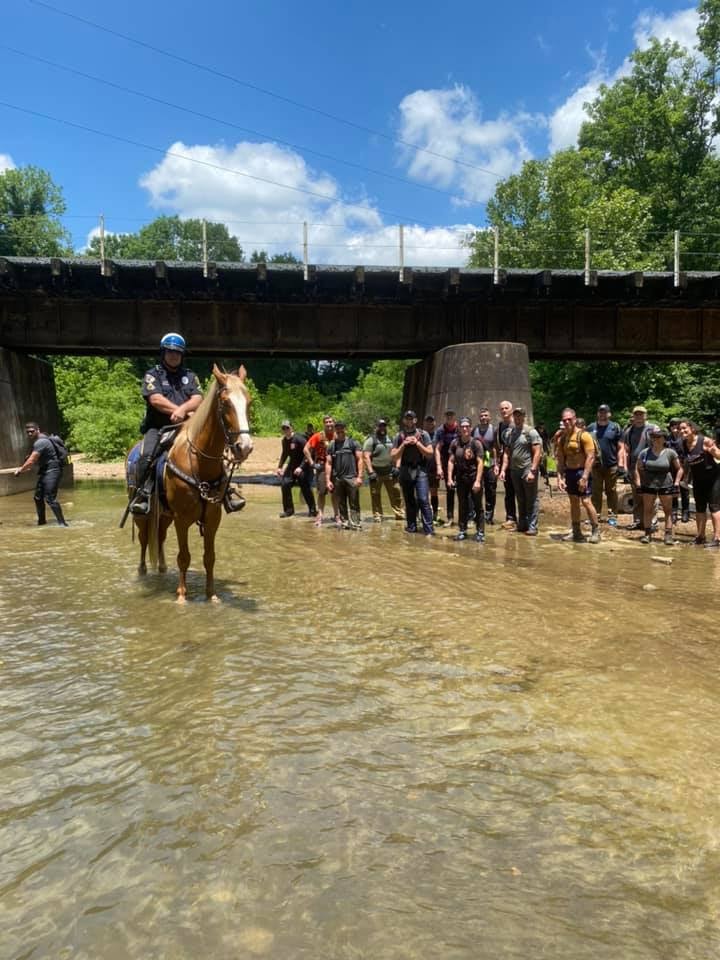
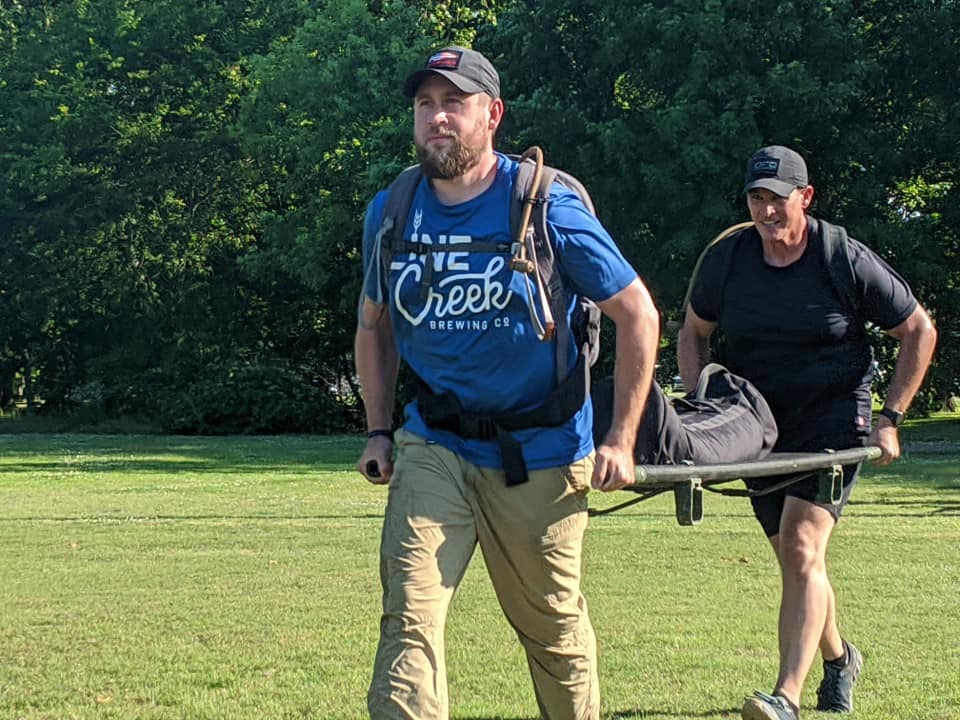
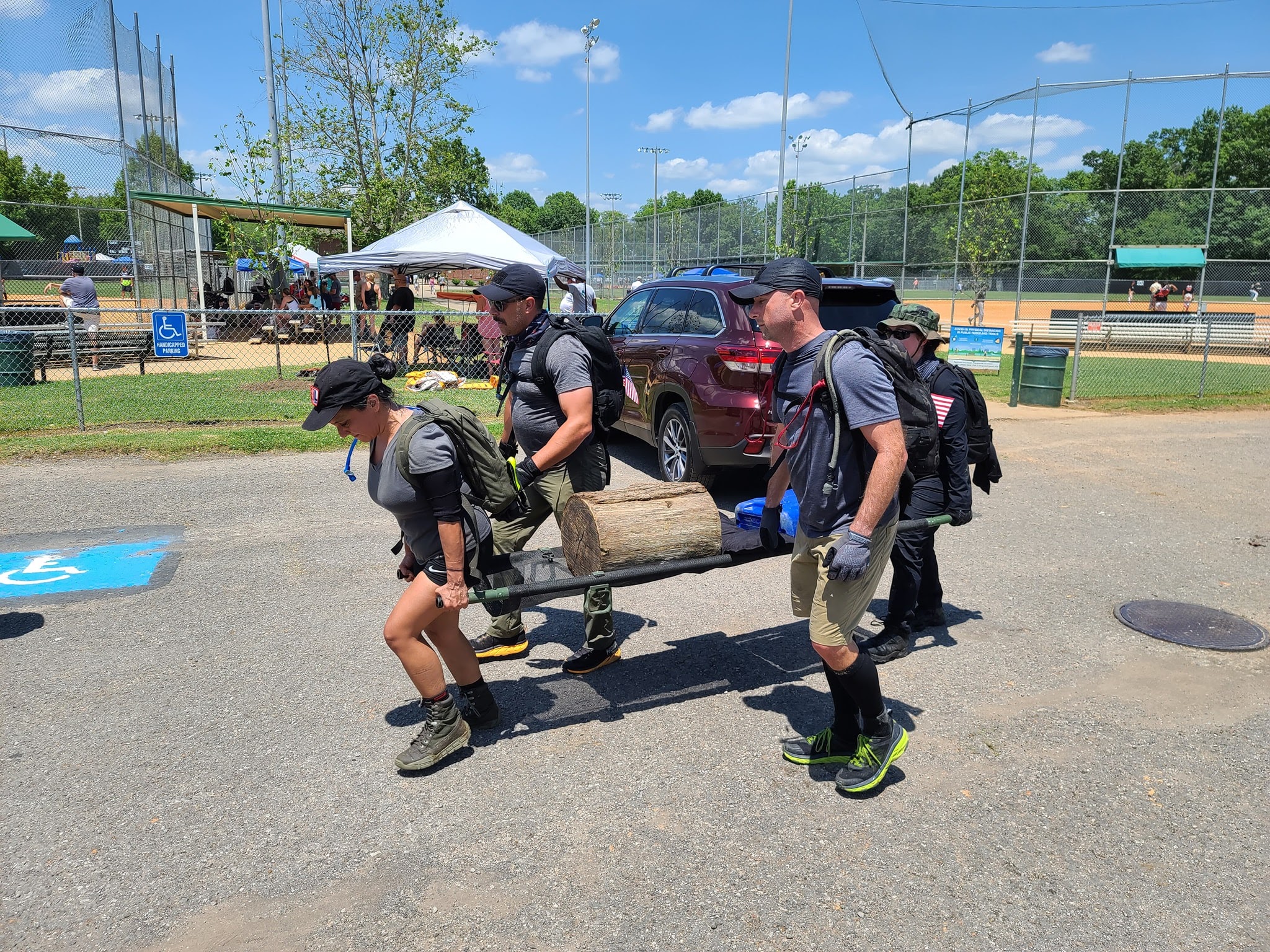
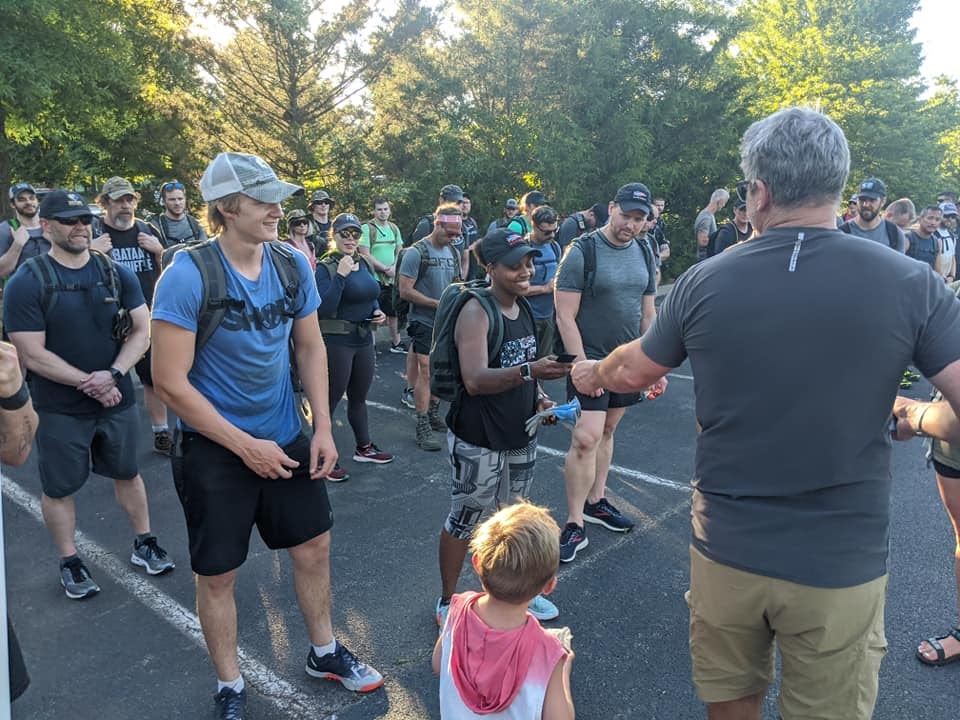
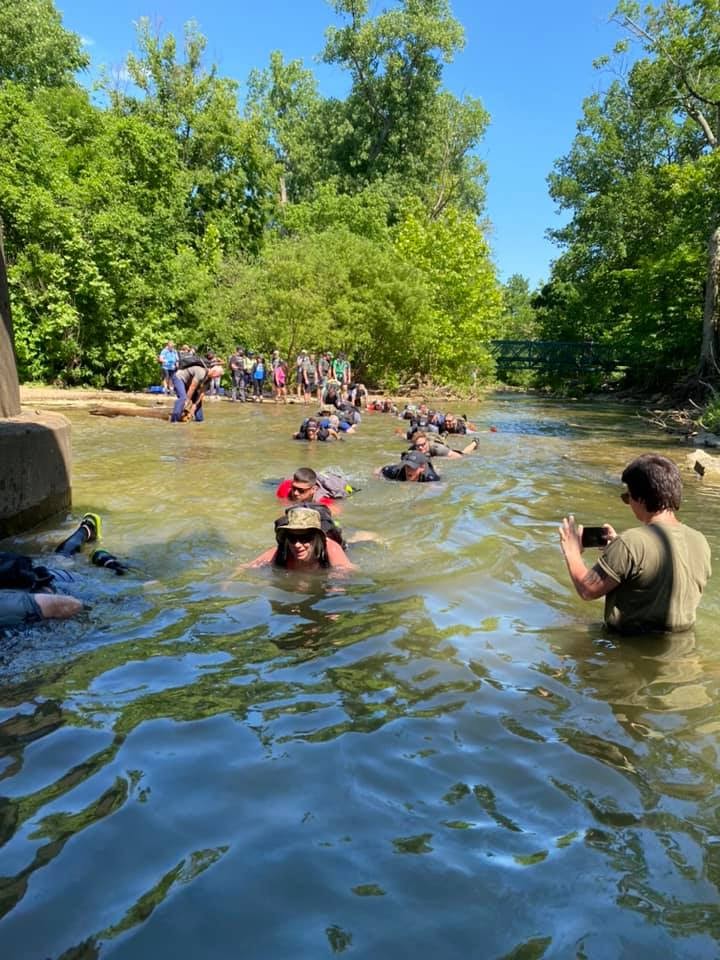
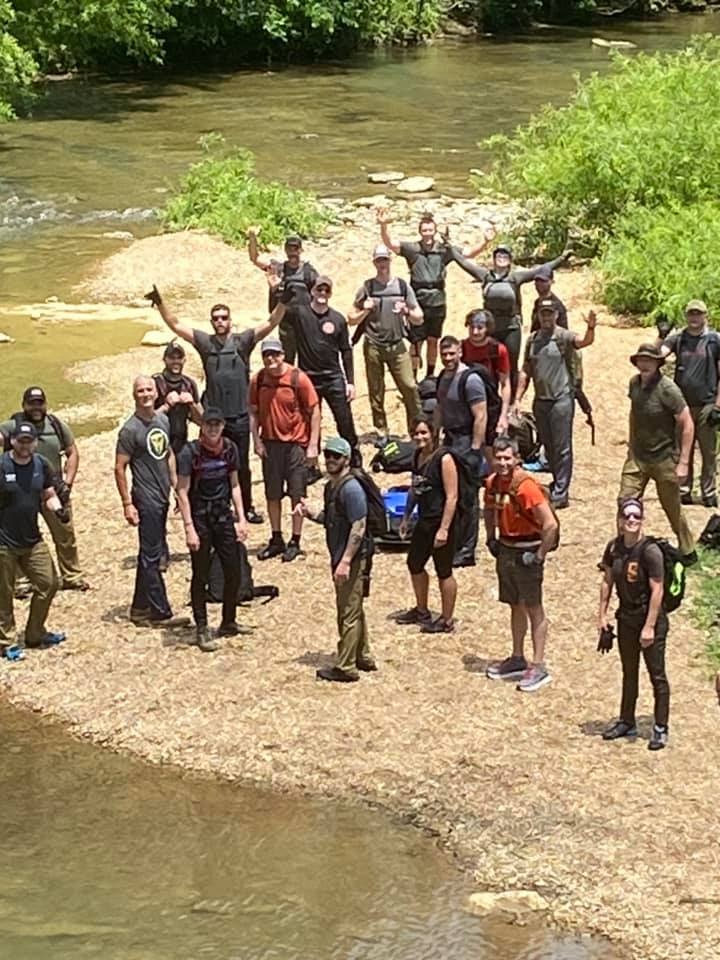
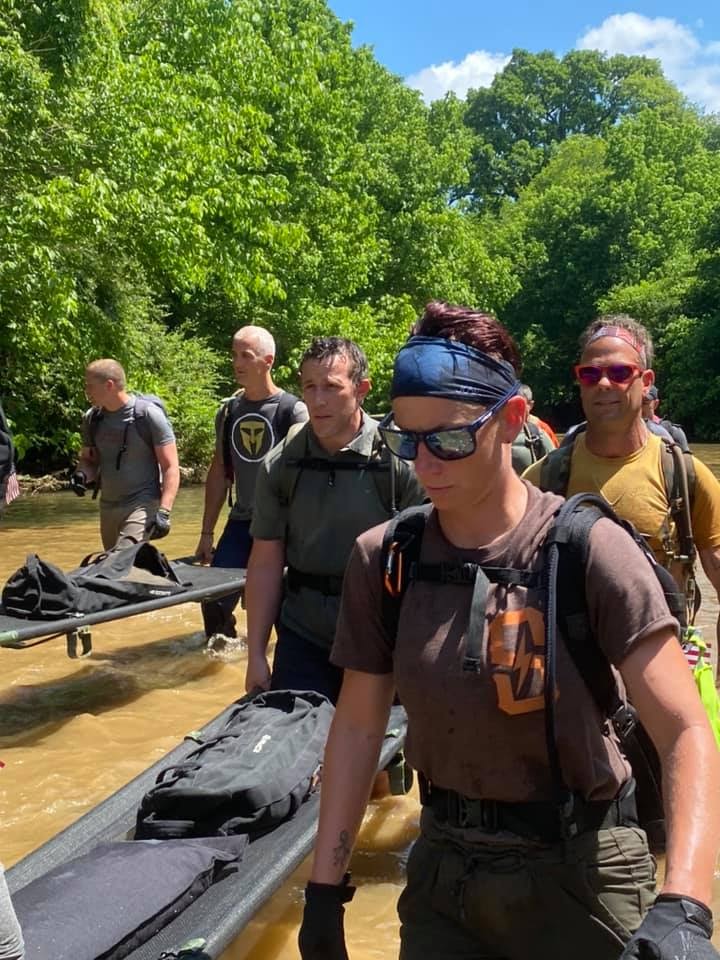
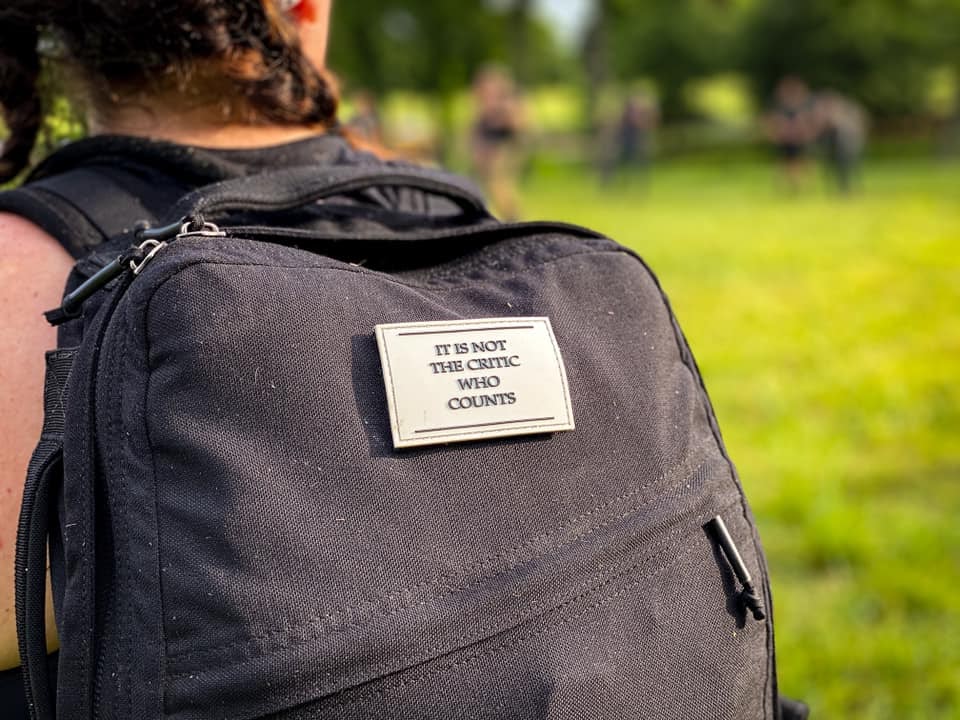
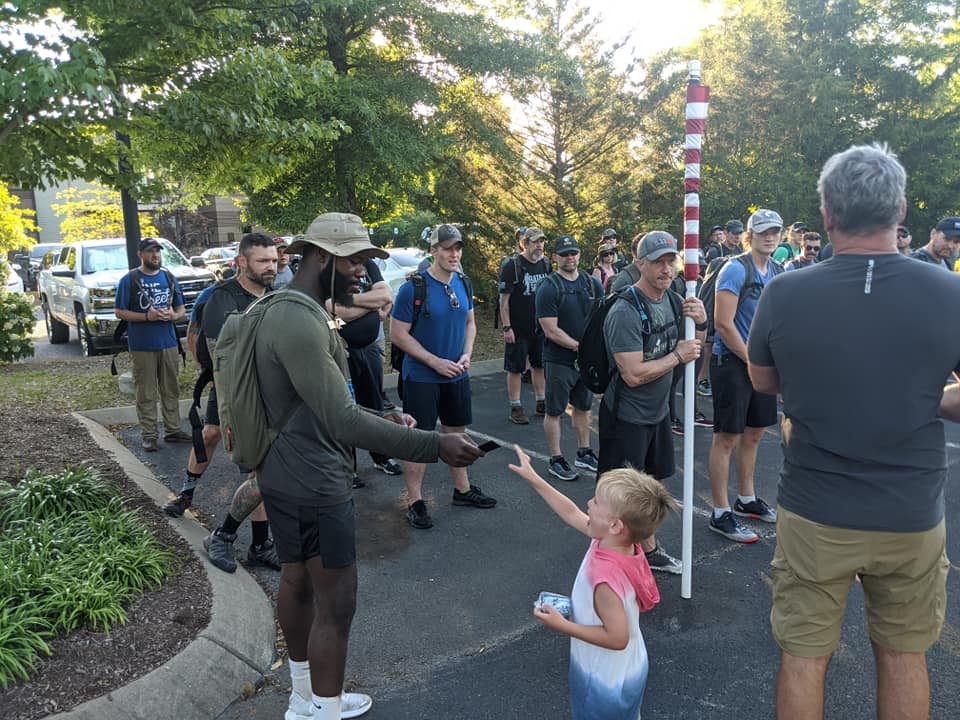
What is an Iron Elvis?
Hey just wanted to give you a quick heads up. The text in your article seem to be running off the screen in Ie.
I’m not sure if this is a format issue or something to do with internet browser compatibility but I figured
I’d post to let you know. The style and design look great though!
Hope you get the issue solved soon. Thanks
my site: nordvpn coupons inspiresensation
350fairfax nordvpn coupons inspiresensation
I absolutely love your website.. Very nice colors & theme.
Did you build this amazing site yourself? Please reply back as
I’m trying to create my very own site and would like to find out where you got this from
or just what the theme is named. Many thanks!
I was suggested this website through my cousin. I’m not sure whether or not this post is written via him as nobody else recognize such detailed about my
problem. You’re incredible! Thanks!
My website :: eharmony special Coupon code 2025
Fantastic goods from you, man. I have understand your stuff
previous to and you are just too excellent. I
actually like what you’ve acquired here, really like what you
are stating and the way in which you say it.
You make it enjoyable and you still take care of to keep it wise.
I can not wait to read much more from you. This is
really a terrific site.
Feel free to surf to my web-site; vpn
What’s up, its fastidious piece of writing about media print, we all understand media is a impressive source
of information. gamefly https://tinyurl.com/2ab5s5qz
It is truly a great and helpful piece of info.
I’m happy that you shared this useful information with
us. Please stay us up to date like this. Thanks for sharing.
https://tinyurl.com/2bm4xgrn what does a vpn do
Hello there! This article couldn’t be written any better!
Looking through this article reminds me of my previous roommate!
He constantly kept talking about this. I will send this post
to him. Fairly certain he’ll have a great read. Thanks for sharing!
That is a really good tip especially to those fresh
to the blogosphere. Short but very precise info… Many thanks for sharing this one.
A must read post!
Your point of view caught my eye and was very interesting. Thanks. I have a question for you.
This content is incredibly informative. 👉 Watch Live Tv online in HD. Stream breaking news, sports, and top shows anytime, anywhere with fast and reliable live streaming.
I have been browsing online more than 4 hours today, yet I never found any interesting article like
yours. It is pretty worth enough for me. Personally, if all webmasters and
bloggers made good content as you did, the internet
will be a lot more useful than ever before. https://tinyurl.com/yneylc4d eharmony special
coupon code 2025
I was able to find good advice from your articles.
Here is my web blog https://tinyurl.com/2z8a8z72
animal supplement stacks
References:
types of steroids bodybuilding (gitea.Ideaopen.cn)
is animal stak a steroid
References:
likemochi.com
legal steroids dbol
References:
clone-deepsound.paineldemonstrativo.com.br
Your article helped me a lot, is there any more related content? Thanks!
Each pharmaceutical product that enters the Roids USA system is completely examined and evaluated, and we collect feedback on the drug earlier than providing it to clients.
You may be confident that your transactions with us will go easily since we by no means
offer anabolic steroids for sale that we are unsure of.
Our anabolic steroid retailer collaborates with a number of prime and extremely qualified laboratories.
It’s the metabolites – the remnants of the metabolized anabolic steroids –
that you won’t have any idea are there until you’ve been examined.
They should allow you as a female consumer to keep away
from androgenic unwanted effects of a virilizing nature. Still, as all the time, you
must be open to experimenting with completely different dosages
and reducing it if required – relying on your tolerance of side effects.
It’s undoubtedly the most well-liked anabolic steroid with feminine athletes of different types.
As I’ve already detailed, blasting for size and
power is almost similar to using Anadrol or Dianabol
as a kickstart in longer cycles. What would possibly
change is your coaching and diet to tweak the results according to
private goals.
Made from a blend of pure components, Prime Male is particularly designed
for males who need to enhance their workout performance, enhance lean muscle mass,
and improve total vitality levels. Anadrole is a powerful authorized
steroid designed to assist fitness lovers obtain rapid muscle growth and improved strength.
Welcome to probably the most reliable online
vacation spot for high-quality anabolic steroids and performance enhancement merchandise.
We provide pharmaceutical-grade laboratory examined steroids with discreet assured home delivery throughout
the Usa and worldwide. Some bodybuilding products include harmful components such as anabolic
steroids. Anabolic steroids are synthetic variations
of the male hormone testosterone. Anabolic steroids and their derivatives are categorized
as controlled substances and have a potential for abuse and dependence.
Your steroid cycle construction might need to include either a kickstarting compound or the method of frontloading.
This will be essential when you’re utilizing
one or more sluggish acting (long ester) steroids which
have lengthy half-lives. With Out a kickstart or
frontloading, you will be ready weeks to see results with steroids like Deca-Durabolin and Equipoise,
which are well known for their long half-lives.
Your metabolism will affect the half-life of a
steroid, however to not the extent of the opposite factors above.
Your life will have an result on the metabolism of oral steroids, which
can naturally vary between people.
All The Time research the compound you intend to make use
of and seek the advice of with skilled customers or medical professionals for steering.
The half-life of a steroid is a really different idea to detection time.
While the half-life does affect detection time to an extent, you can’t depend on a steroid’s half-life to estimate simply how lengthy
that steroid may have the flexibility to be detected via drug testing.
Detectable metabolites will stay round longer within the body the extra a steroid hormone is resistant to metabolism.
Finally, the physique will metabolize and excrete the steroid utterly, but
there is no set period, and this issue will differ
between people. Some steroids are known to be extra immune to the body’s metabolism than others, a notable example being Trenbolone.
Some of those steroids can exit the body in the urine with out having been metabolized,
producing a robust optimistic result for a protracted interval of a number of months.
Such organ enlargement also applies to the heart, growing cardiac mass (10).
Tissue enlargement can also be frequent while taking HGH,
with people’s noses usually getting greater in size over time.
Clenbuterol notably increases coronary heart fee in our sufferers, which can be supported by analysis (8).
This happens as a result of excessive adrenaline production, putting pointless pressure on the guts.
Although Clenbuterol is used by many bodybuilders to great
impact when making an attempt to lean out and get ripped, it isn’t FDA-approved for humans.
From a safety perspective, we find Winsol to be the better possibility,
with not one of the above unwanted effects being a cause for concern.
One important factor to consider when shopping for legal steroids is the value and
availability of those dietary supplements. Another key factor to contemplate is making certain the
authorized steroid has undergone thorough testing for safety.
Dependable manufacturers will typically comply with stringent security
measures and often have their products tested by accredited third-party laboratories.
This helps to ensure that the products are protected to use and devoid of harmful substances.
At All Times analysis the model and its status, as nicely as verify the certifications and licenses they possess to make sure you’re buying a safe and dependable product.
In our assortment you will discover everything you need on your Bodybuilding, Fitness
or Weight-Loss Coaching. We offer the most well-liked and very finest quality anabolic
steroids and bodybuilding dietary supplements for the most
effective costs on the Internet. In 2008, we now have decided
to increase our anabolic bodybuilding steroids distribution by proposing these
same steroids online. We are mainly furnished
by our affiliated steroids supplying company in Asia and Europe which offers us
with all authorized steroids. When you’re utilizing HCG during a cycle, you need to stop it two weeks
before your identified anabolic steroid clearance time. It ensures once you
begin PCT, steroids will be cleared from the physique, and your final HCG shot would have been two weeks ago (this is if your
major compound is amongst the testosterone esters talked about above).
If you desire insane fats loss, leaner muscles, and a
shredded, Hollywood swoon-worthy physique, shop a few of the greatest fat
burners like Anavar, Clenbuterol, Winstrol, and T3 or save money with our stack of slicing steroids.
The Legal Code of Canada outlines strict consequences for these caught trafficking or selling steroids
illegally. Convictions can result in fines, legal information, and
even imprisonment, making it essential to
understand the risks involved. We offer solely the highest quality, pharmaceutical-grade products from
GMP-certified producers. With over 100 merchandise from Peptides, SARMs, Libido, HGH, Anabolics Oral’s and Injectables(MCT oil), and different Pharma merchandise, we our the one-stop store for Canadians.
Prepared to raise your health journey with legal, effective supplements?
References:
PedsElite
There are some “common” unwanted side effects that most steroid users will cope with sooner or later, and to some stage of severity ranging from mild to extreme.
Steroid users will usually use this type of injection when using different types of
compounds like HGH, peptides, HCG, and insulin. Subcut injections aren’t as
suited for oil-based solutions as most steroids but
work well with water-based compounds. If you’re committed to utilizing injectables
for a full cycle and future cycles, you’ll need to stock up on all of
the necessities; this includes syringes, pins, and different supplies.
As a brand new steroid person, you won’t even know what a few of these objects
are unless you’ve labored within the medical subject.
On-cycle therapy will give consideration to defending your liver, kidneys,
and cardiovascular system. Even low doses of
PEDs can pose a danger, but widespread sense actions can decrease the prospect of serious issues.
The draw back to trenbolone is undoubtedly the cruel
side effects it produces, making it solely appropriate for
skilled steroid customers. If this weren’t a list of one of the best steroids for mass but instead the most effective steroids for
lean muscle, trenbolone can be number one. Testosterone additionally has
potent fat-burning properties, with customers experiencing a notable discount in subcutaneous fat.
Thus, regardless of testosterone’s highly effective anabolic
nature, it may also be used as a cutting steroid. Bodybuilders in our clinic usually achieve 25–30 kilos of weight throughout their first Dianabol cycle, with roughly two-thirds
of this being lean muscle and the remaining being water retention. There could additionally be a quantity of
hyper-responders to sure testosterone boosters, inflicting them to gain 10 lbs of lean mass from approximately
4–8 weeks of supplementation. However, this is not typical, and for most users, a fraction of this is likely to
be the end result.
They are normally made up of 2-50 amino acids with a linear configuration, are much shorter than proteins, and do not create advanced
three-dimensional buildings. Peptides are quick chains of amino
acids which are known as the building blocks of proteins.
They are authorized in certain nations to buy for analysis
functions; thus, if researchers are acquiring SARMs to manage liquid drops
to rodents and observe the results, that is throughout the confines of US regulation. Research also exhibits that SARMs can induce hepatic injury and trigger ldl
cholesterol alterations in sure users. Dr. Tina M. St.
John owns and operates a health communications and consulting agency.
She is also an accomplished medical author and editor,
and was formerly a senior medical officer with the us
Docs prescribe corticosteroids primarily to cut back dangerous
irritation within the physique because of a variety of situations, corresponding to
Crohn illness, ulcerative colitis, a quantity of sclerosis, lupus and rheumatoid arthritis.
Taking a testosterone injection, cream or capsule as prescribed by your healthcare supplier
to improve hormone ranges is not the same thing as taking steroids.
When you hear the time period “steroids,” you in all probability
image ripped bodybuilders and overly aggressive behavior (“roid rage”).
But steroids are a form of testosterone—the same stuff your doctor might prescribe if you’ve been feeling draggy or down in midlife.
You should have common appointments with your healthcare supplier when taking
an anabolic steroid to evaluate how properly it’s working.
There can also be hypothesis round whether or not sure Boldenone metabolites
act as aromatase inhibitors and attenuate the estrogenic activity of the parent hormone.
Wise compound selection to maximise performance varies extensively between totally
different sports. As elaborated in this article, HGH and
steroids are not the identical thing, although
the explanations that someone might confuse them
are comprehensible. And, as a cherry on prime of this amazing cake, EliteHRT does have the means to
prescribe pure HGH, one thing that is hardly ever seen.
This is due to their relentless pursuit of treating their shoppers with bioidentical hormones.
Growth Hormone Therapy, Testosterone Therapy, and Nutraceuticals Injectables.
Whereas testosterone performs a pivotal role in physical and
mental health, the misuse of anabolic steroids without proper oversight can result in life-threatening problems.
Anabolic steroids work by enhancing protein synthesis in cells, selling hypertrophy (muscle growth) and restoration. This can present a
big benefit in resistance coaching and competitive sports.
As a newbie cycle, you’ll need to start at a half dose twice
a week, then enhance the dose to the full degree of 200mg as a weekly injection. Testosterone Cypionate and Enanthate are thought of
to be very similar, and even within the medical area,
these two esters are sometimes interchangeable.
The primary distinction between these esters is how slow or quick they are
often launched into the body after an injection and how long they elevate your testosterone ranges.
Steroid cycling is used by individuals who know exactly what they want to obtain and when, in addition to once they want to
be steroid-free when it comes to being examined.
The empirical proof that the athletes seen might have led to the event of distrust
between the athletic and medical communities. Science has been lagging several
years behind the experimental practices of athletes.
These practices are widespread to the athletic group and never for the medicinal functions
of anabolic steroid remedy. In addition, some
athletes (especially bodybuilders) have experimented with medicine
unbeknown to the medical community, i.e. insulin, thyroid
hormones, and site-specific enhancers corresponding to
Synthol and Esiclene to name a couple of. Steroids,
specifically anabolic-androgenic steroids (AAS),
are synthetic derivatives of testosterone, designed to imitate
its muscle-building effects while minimizing the androgenic effects related to male
characteristics. Their capability to reinforce protein synthesis,
cut back fats, and increase lean muscle mass
makes them a preferred choice among athletes and bodybuilders.
After administration of the steroid being examined, numerous body components and muscles of a
rat would be analyzed. Since testosterone was thought of the standard for testing, the tissues can be compared to tissues that have
been exposed to testosterone. The levator ani is a muscle in rats that
control the motion of the rail. The increase in muscle measurement and weight of
the levator ani would give an accurate indication of
the steroid’s anabolic capabilities. Testosterone is used as
a baseline standard that each one different anabolic steroids are measured
against. These values clarify so much concerning the steroid, and they assist to determine what the compound is capable of.
Injectable anabolic steroids are synthetic forms of testosterone or its derivatives which are administered through
intramuscular injection.
Currently, over 60 peptide-based drugs are accredited Anavar for Weight Loss human use and tons of of
analysis peptides are under active investigation [3, 4].
Analysis peptides are shaped from amino acids chained together by peptide bonds.
This results in the formation of complicated molecular
buildings with properties based mostly on unique amino acid sequences.
In the world of aggressive sports, even medically prescribed TRT can raise eyebrows.
Some argue that it supplies an unfair benefit, while others contend
that it merely ranges the taking part in area for those with
reliable medical needs. Steroids are prescribed
to treat a extensive range of circumstances together with bronchial
asthma, hay fever, eczema, arthritis, inflammatory bowel illness (such
as Crohn’s disease), and a number of sclerosis (MS).
Individuals will all the time discover different ways of doing
something; this is solely one person’s opinion.
After injection, an oil depot varieties contained in the muscle tissue and spreads along the
muscle fibers – seemingly squeezed between them – forming an elongated form (3).
The price at which this happens strongly is determined by the carboxylic acid group that’s connected onto the father or
mother molecule at carbon 17 of the steroid nucleus. This attachment – esterification of the 17β-hydroxyl group – significantly retards the release of
the compound from the oil depot by growing its partition coefficient, i.e.,
making it more lipophilic and fewer hydrophilic. As Quickly As the esterified steroid molecule reaches the systemic circulation, either
through direct diffusion or lymphatic drainage of the interstitial fluid,
esterases cleave off the ester group, releasing the mother or father compound
(7). Sure, should you take prescription anabolic steroids underneath the supervision of your
healthcare provider for a medical purpose, anabolic steroids
are typically secure. The BALCO scandal also unveiled
the practice of designing new AAS medication by making delicate adjustments in the chemical structure to keep away from detection by regulatory
drug screening (Joseph & Parr, 2015; Parr, Flenker, & Schanzer,
2010). Of concern, designer AAS production continues, with many purposefully marketed beneath the guise of dietary supplements to bypass U.S.
In Accordance to the National Institute on Drug Abuse (NIDA),
continuous use of AASs can lead to problems such as tolerance, which means an individual needs higher doses to realize the same effects.
Other research reveals that specializing in the prevention of high-risk conduct normally can be a catchall to assist keep off anabolic steroid use.
Usa federal law enforcement officers have expressed concern about AAS use by police officers.
Despite the comprehensive analysis and literature regarding AAS dependence, there stays little proof concerning effective interventions to support cessation of use or management of withdrawal.
It is hoped that the development diagnostic tools [46], tips for medical
management [85] and harm reduction [82] or the commissioning
of health services [83] shall be accompanied by sturdy research and analysis.
The diminished CAR% noticed in AAS customers can also be indicative of accelerated arterial
ageing course of. Earlier studies show that CAR% is lowered in older
people compared to youthful ones30,38. Individuals
at risk for CVD also exhibit decreased CAR% in response to a
chilly pressor test compared to those without risk factors29,30.
CAR% is considered a marker of physiological arterial ageing, as its response diminishes with age38, and reduced CAR%
is pathological when discovered within the younger population. In this context, we’d argue
that AAS use appears to expedite the ageing process and increase the
risk for CVD.
Testosterone is irreversibly converted by the enzyme 5α-reductase to 5α-dihydrotestosterone
(DHT), which binds with higher affinity to the androgen receptor
(AR), or by aromatase to oestradiol, which binds to the
oestrogen receptor (ER). Testosterone and DHT can be additionally transformed to weaker
androgens (not displayed), once more being depending
on whether or not the target tissue has the required enzyme exercise, e.g.,
3α-hydroxysteroid dehydrogenase, 17β-hydroxysteroid dehydrogenase.
As lengthy as anabolic steroid misuse is well-liked amongst young athletes, data campaigns concerning AASs and other doping agents ought to
be encouraged in high schools. In this regard, to forestall the use
of AASs public health measures in all settings are crucial.
Anabolic steroids are used medically in humans to
deal with a wide range of conditions, including anemia, breast most cancers, hypogonadism, quick
stature, malnutrition, osteoporosis, and human immunodeficiency
virus (HIV) wasting syndrome. The medicine are also utilized in veterinary medication (e.g.,
to assist restoration from hunger or injury). Some examples of anabolic
steroids are nandrolone, oxandrolone, oxymetholone, stanozolol, and trenbolone acetate.
After administration, various body elements and muscles of the
rats would be analyzed (such because the levator ani,
seminal vesicles, and ventral prostate).
This methodology offers a method to check the androgenic and anabolic results of different
steroids. However, it’s important to remember that
these numerical ratios are more of a guideline than an absolute measure of
a steroid’s power. It’s not so simple as a better ratio equating to a
considerably stronger steroid.
Testosterone derivatives and associated compounds (such as anabolic-androgenic steroids—AAS) are
regularly misused by athletes (both skilled and amateur) wishing to
advertise muscle improvement and power or to cowl AAS misuse.
Testosterone and associated steroids have been in some countries handled as controlled substances,
which can affect the availability of these brokers for patients who
need them for therapeutic causes in a given country. Although these
agents are presently thought to be rather older generation drugs and their use could lead to severe side-effects, they nonetheless have medicinal worth as androgenic, anabolic, and even anti-androgenic agents.
This evaluation summarizes and revisits the medicinal use of compounds based
mostly on the structure and organic activity of testosterone, with examples of particular compounds.
Moreover, a number of the newer androgenic-anabolic compounds are mentioned corresponding to selective androgen receptor
modulators, the efficacy/adverse-effect profiles of
which haven’t been sufficiently established and which can pose a larger threat than typical androgenic-anabolic agents.
However, there is not a evidence that any of those methods
truly reduce side effects and hurt from taking steroids.
It’s pushed as a cure-all for a spread of men’s well being issues together with every little thing from sex drive to exhaustion, when that’s not
often the case. Normal ranges of testosterone are important
for improvement and total wellbeing.
Thousands of males expertise signs of low testosterone, otherwise generally known as low T, yearly.
The pure penalties of this hormone disruption aren’t always brazenly discussed—but
they want to be. Low sex drive, muscle loss, and diminished power
are only a few of the experiences which are frequent to males who’ve low T, and these uncomfortable signs could be simply and safely
handled through testosterone replacement remedy (TRT).
References:
Håndtering av hormonell ubalanse